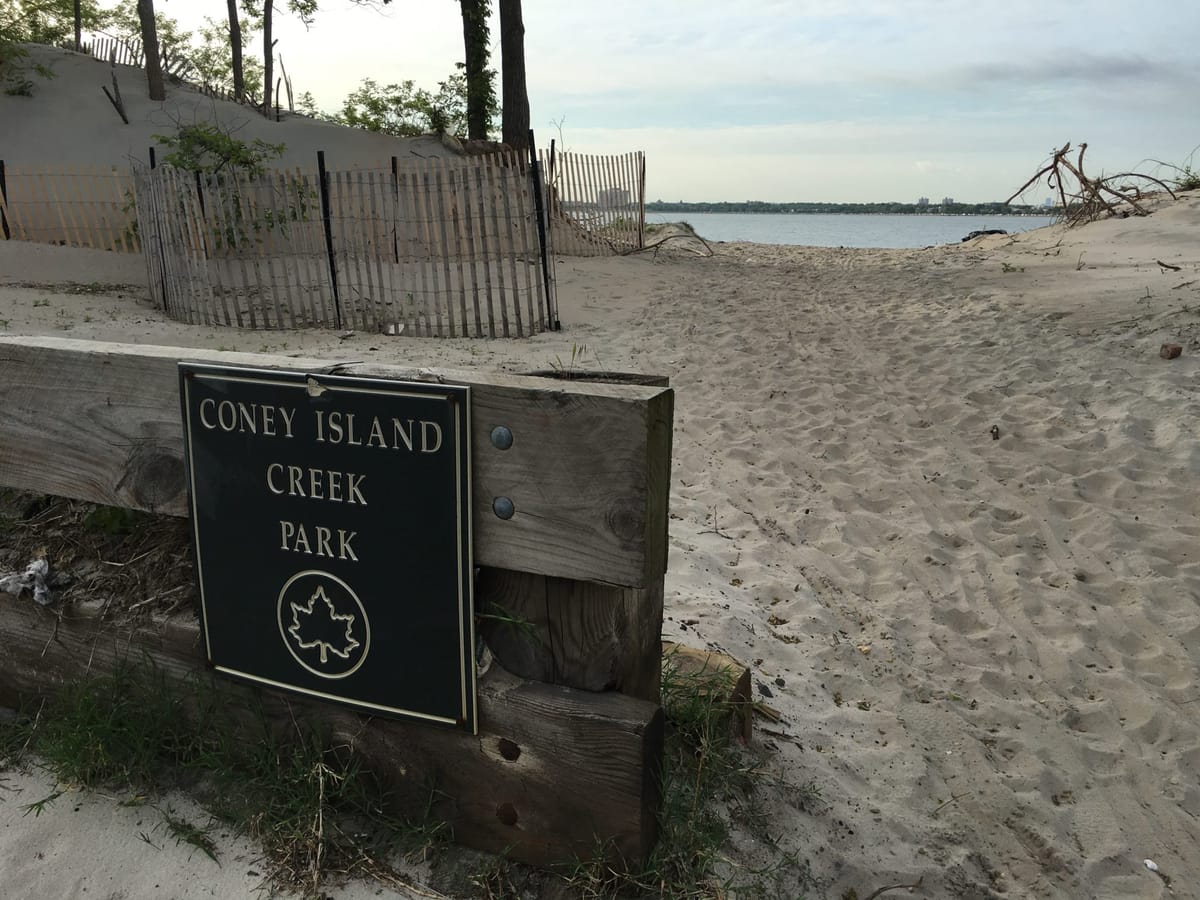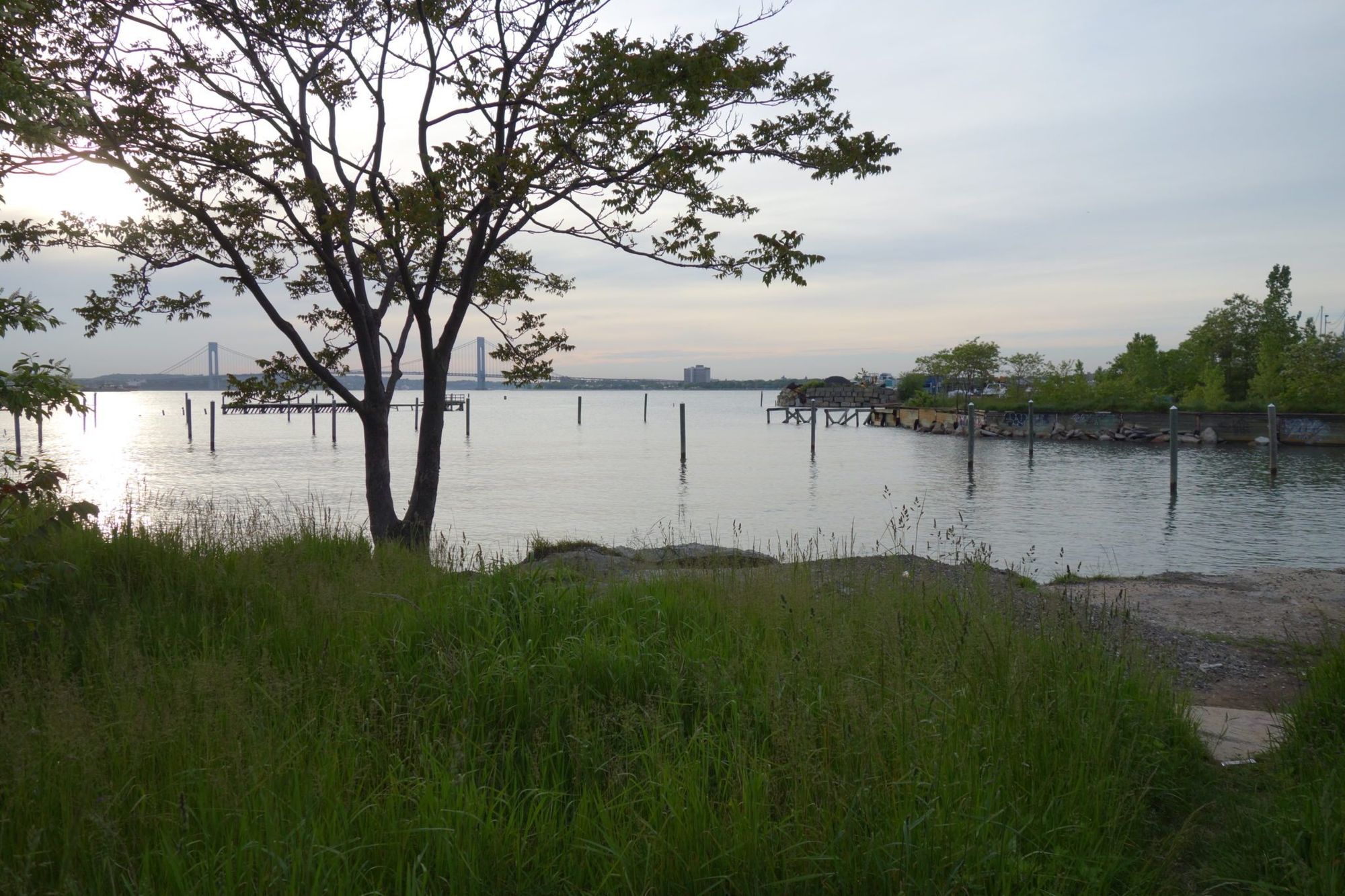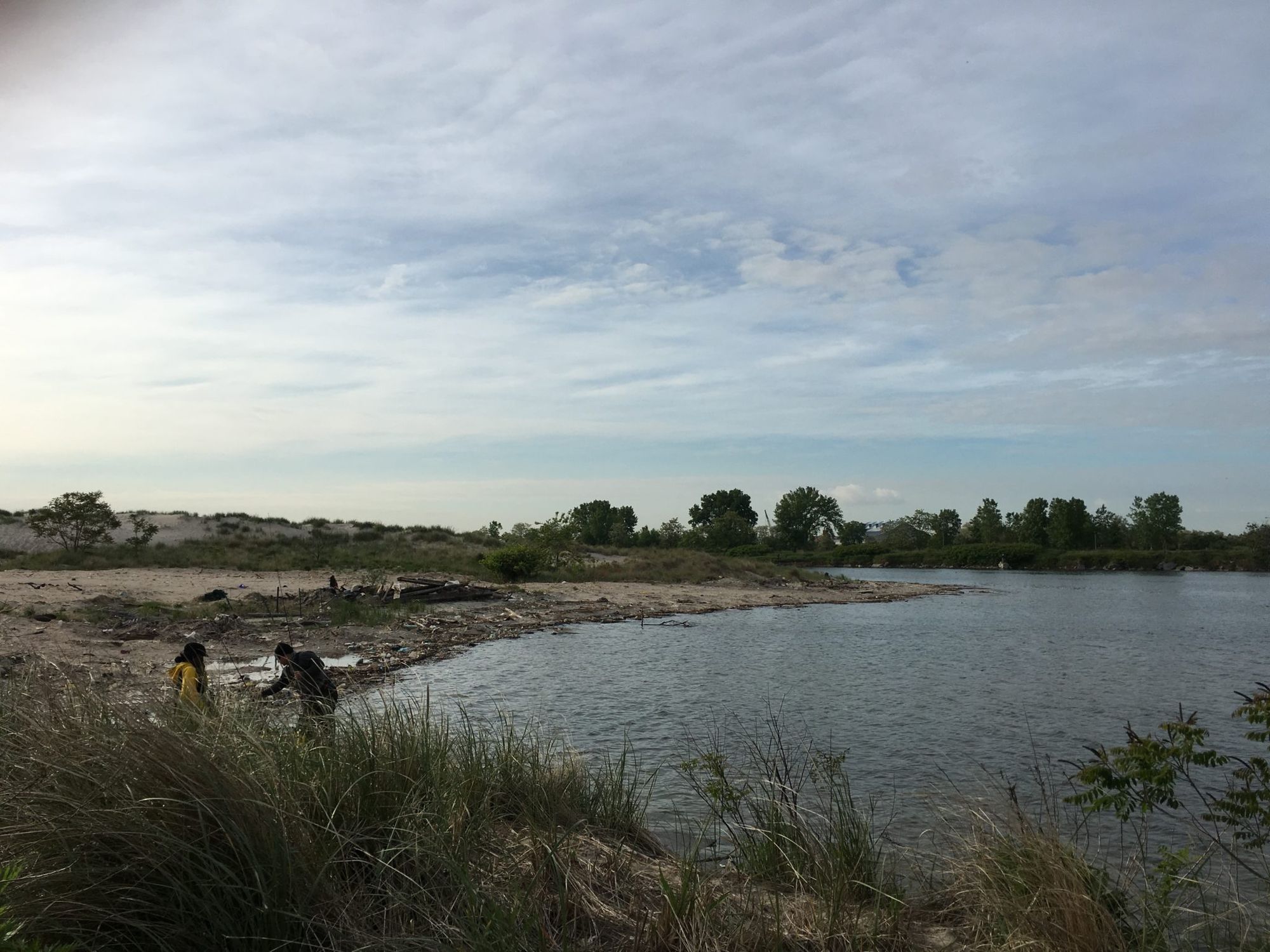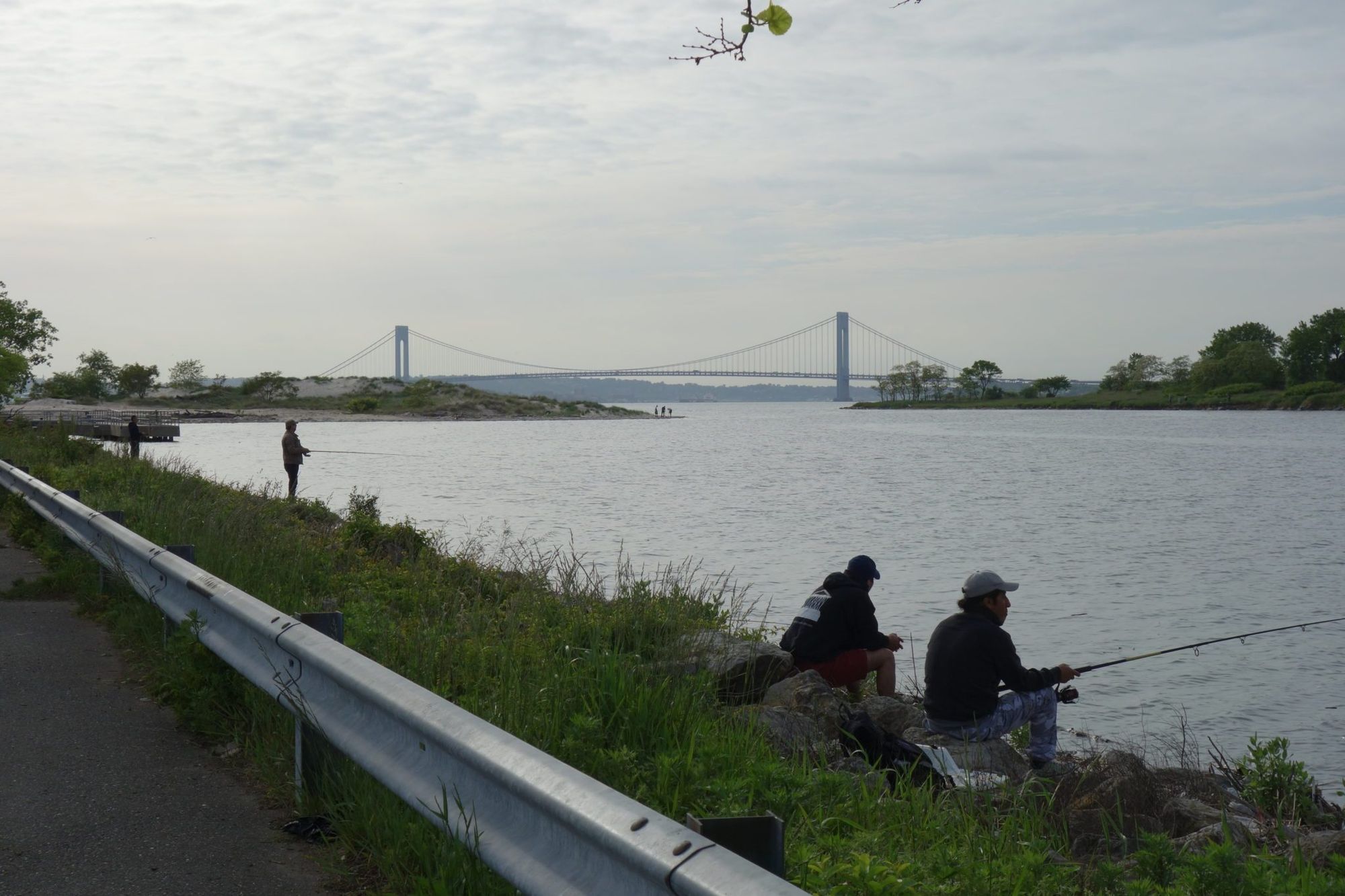Another Smelly Summer? Sewage Bacteria Swarms Coney Island Creek, Again


Last year, Beach Haven Apartments, a private luxury apartment complex was caught dumping 200,000 gallons of raw sewage per day into the Coney Island Creek, infuriating residents who say they weren’t adequately notified of the spill.
Levels of fecal coliform bacteria have dropped dramatically since the massive dumping was discovered and halted, however, earlier this month researchers from Kingsborough Community College, who have been monitoring the creek since December, found another pathogen stream that’s again raising public concern.
“We’re finding high counts every week,” said biologist Thomas Greene, an adjunct professor at Kingsborough Community College who led students in this study. “There appears to be a steady movement of effluence from some source coming into the creek.”
Exposure to high concentrations of the bacteria, found in the feces of warm-blooded animals, can leave people with nausea, fever, diarrhea, and sometimes more serious illnesses.
Even though the Coney Island Creek is a class I waterbody, intended for fishing and boating, not swimming, many locals wade in the stream, including children, fishermen, local churches who conduct baptisms in the Creek’s waters; and community groups who help clean the Creek.

The 1.5-mile creek runs through a densely populated area, with three parks that are popular fishing and boating spots. The study found high fecal coliform counts well above the EPA standards for swimming, shell fishing, and boating.
According to the DEP, over the course of a month, the mean fecal count for a class I water body should be less than or equal to 2,000 units/100mL for boating. In swimming waters, however, the number should be less than 200 units/100mL.
The Kingsborough study found the highest levels of the gut-wrenching bacteria around the mouth of the Coney Island Creek, with an average saturation of more than 2,600 colonies of bacteria per 100 milliliters, Greene told BKLYNER. The lowest levels were found surrounding Manhattan and Plumb beaches, at an average of just 64/100mL.
And many locals are upset that there is still no signage alerting the public of the pollutants.

More studies point to wild fluctuations in bacteria counts
Studies by the Department of Environmental Conservation show disturbing fluctuations in fecal coliform levels throughout the year.
Fecal counts at CIC2 and CIC3, two of the Creek’s sampling points, varied wildly this year, ranging from 30 (per 100mL) in January and spiked to 35,000 (per 100mL) in March, then back down to 1,306 in April. Last year the counts varied wildly, too — from 126,000 coliform units in October, to just 570 in May.
DEC officials say that the fluctuations are standard, given the nature of discharges from storm sewers in intermittent wet weather. But other experts are skeptical and point to other possible sources of contamination.
“Something not right here,” said Lane Rosen, environmental science teacher at John Dewey High School. Rosen holds scores of site cleanups and educational events at the creek. For the upcoming ‘It’s My Estuary Day’ scheduled for June 3, he’s bringing extra soap and extra caution.
“It’s a big problem for the entire neighborhood,” he said. “I’m in a bad spot, I have to worry about this water quality for the safety of the children.”
Many advocates are demanding warning signs along the waterfront, more than just the standard “no swimming” plaques that are posted for the lack of lifeguard supervision. “It should say ‘fish at your own risk, possible sewage contamination,'” said Rosen. “Whenever I go out there there’s always somebody on the beach doing something. It’s a beautiful place that’s very accessible.”

On a warm, spring afternoon, we saw fisherman scattered along various parts of the creek, people in kayaks, and kids playing along the shoreline. One local resident said he’s been fishing off one of the dead-end streets since the 1970s, catching stripers, bluefish, and even Albacore tuna once in a while.
When we asked him about the increased sewage in the water, he shrugged. “What are you going to do? This is my place where I can come to unwind, to relax,” he said.
Murky causes
Trying to isolate the cause of high fecal counts in Coney Island Creek can lead researchers down a dizzying path.
The City says that a whopping 1.4 billion gallons of untreated stormwater — containing trash, oil and other pollutants — are released into the Creek annually. An additional 75 million gallons of untreated sewage and stormwater are released annually from the combined sewer outflow point, triggered when rainwater overwhelms sewer mains and local treatments plants (known as CSOs).
And with at least 10 outflow points from City stormwater drains, a combined (sewage and stormwater) main, and privately owned stormwater outflow points, the Creek gets a regular dumping on a rainy day.
“24 to 48 hours after heavy rains there are usually high coliform counts unless the tide goes out and carries the water offshore,” said Greene.
Additionally, some locals point to contamination from pet waste in the street, possible sewage from private boats, and stormwater draining into the creek from the MTA yards — not to mention other environmental pollutants like the occasional diesel oil spill.
The City says that it is working to reduce the amount of raw sewage and stormwater releases into the Creek through both “grey” infrastructure (the upgraded Avenue V pumping station), and “green” infrastructure that absorbs rainwater (such as bioswales, green roofs, and permeable paving).
After last year’s major bacterial contamination, advocates and officials are pushing to declare the Creek a Superfund site, to attract funding and attention to the boro’s neglected waterway. The creek has been dumped on for years, earning the nickname “stink creek” after decades of industrial pollution from abandoned ships, a dye factory, and Brooklyn Union Gas (National Grid) facilities. In 2014, locals saw sludge spilling into the creek during a storm drain cleaning. (Though it still doesn’t compare to the astronomical pollutant levels found in the Gowanus Canal or Newtown Creek, some experts say.)
“It’s not enough to be vocal, elected officials have to start doing instead of talking about it,” said Greene.

Silence in Beach Haven Apartment Complex settlements
The State Department of Environmental Conservation is allegedly punishing the privately owned Beach Haven apartment complex through “administrative enforcement action” to negotiate a settlement for the illegal dumping, according to state DEC sources. (Beach Haven, incidentally, was built by Fred C. Trump, President Donald Trump’s father).
DEC Representatives told BKLYNER that they are continuing to monitor water quality at the creek, take samples, and investigate potential illicit discharges, detailed in this 2017 progress report for storm sewage management.
We asked the DEC for information regarding the settlement — how much will the polluter pay and where will that money go — but were told that the details are private while the case is being settled.
Last October, NYC’s biggest cesspool company was found guilty of dumping sewage waste into manholes flowing directly into the Gowanus Canal, violating the Clean Water Act. They were slapped with $900,000 in criminal fines, and a $175,000 community service payment to the National Fish and Wildlife Foundation to be used toward projects “in or directly benefiting the Gowanus area.”
“We’re hoping that the lawyers are asking for retribution, for penalty payments to go directly to the Coney Island Creek,” said Community Board 13 District Manager Eddie Mark, waiting for the results of the settlement case that’s been 7 months and counting.
In the meantime, the DEP told the community board that they’re planning to put up signs warning locals to stay out of the water up to 48 hours after a heavy rainstorm.
“We haven’t seen the sign yet,” he said. [We reached out to the DEP but didn’t hear back in time for publication.]
But whether it’s lack of signage or waiting for the details of a privately negotiated settlement, the hush-hush around this issue is concerning for local scientists, residents, and environmental activists.
“We live in a city with hundreds of miles of coastlines,” said Rosen. “The city and state have to pay more attention to this. There’s no park cops, wildlife cops, or coast guard around. I don’t know who’s enforcing the laws, but they’re not visible.”



